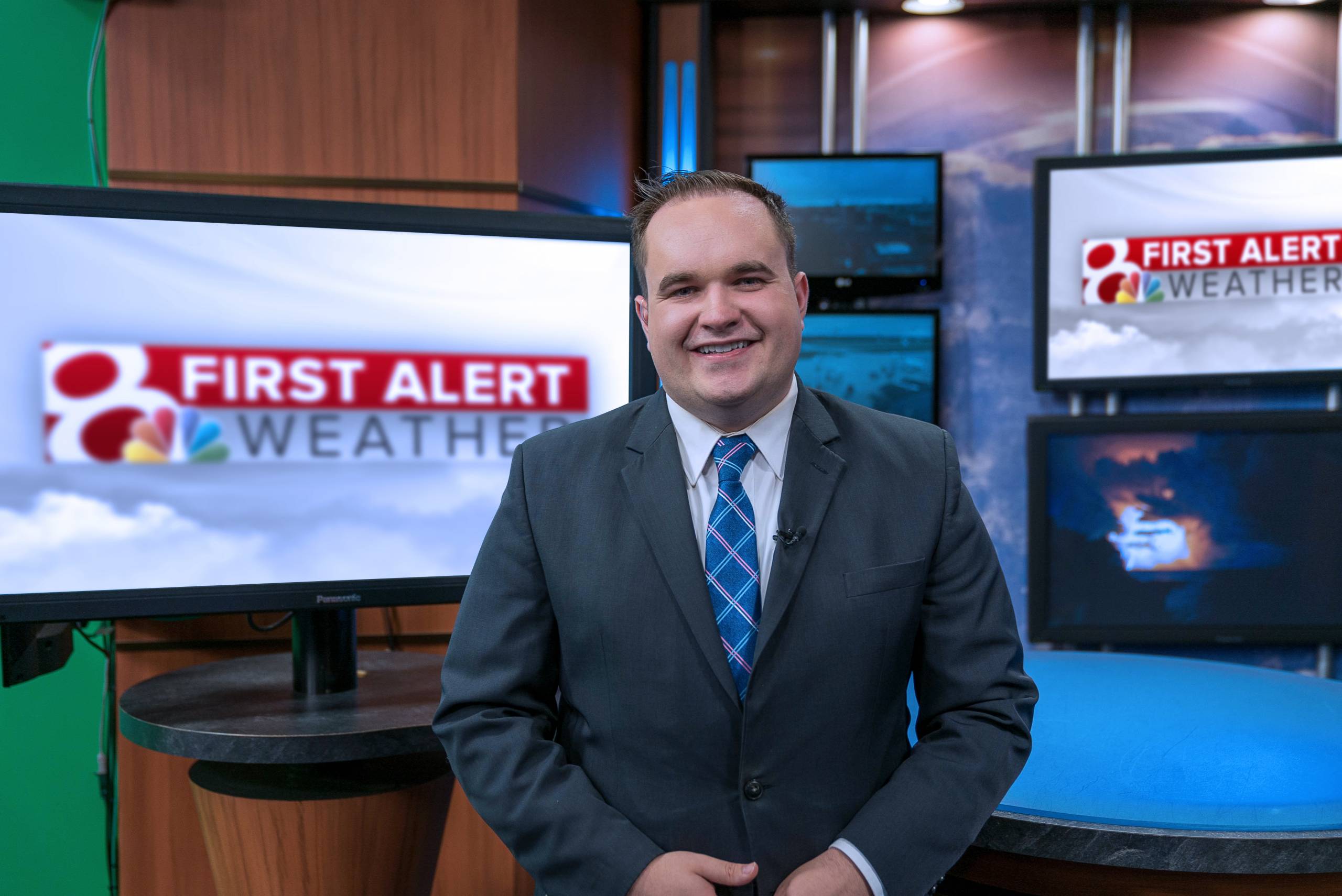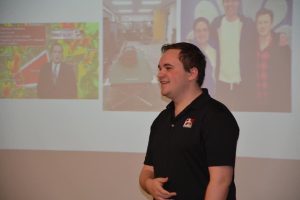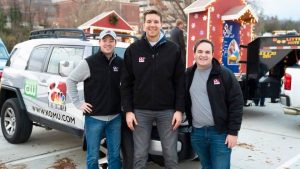
An early passion for broadcast meteorology and a desire to get a degree from a university in the state he grew up in led Matt Beckwith to the University of Missouri. Beckwith thought the atmospheric science emphasis area within the MU College of Agriculture, Food and Natural Resources (CAFNR) environmental sciences degree program would help prepare him for a career as a meteorologist.
When Beckwith, who grew up in the Kansas City area, walked onto campus in 2015, he knew right away that he made the correct decision. Along with a strong faculty within the degree program, Beckwith had the opportunity to intern with KOMU-TV 8, a television station owned by MU. His internship with KOMU eventually led to a job offer – and Beckwith has served as a meteorologist with the station since late 2018.
“The atmospheric science program in CAFNR is so well-rounded,” Beckwith said. “Some universities are known to produce a lot of broadcast meteorologists; others produce numerous researchers. At Mizzou, you have such a strong mixture. Some students want to work in TV, some want to work at the National Weather Service and others go to graduate school for weather research. CAFNR does a great job of prepping you for whatever route you want to go.”
Beckwith said the environmental sciences faculty, especially those he interacted with regularly in atmospheric science, played an important role in preparing him for life after college. They not only provided the knowledge to aid him in his future career, the faculty cared about him as a person.
“It’s a small but mighty group,” Beckwith said. “Each professor brings something unique to the program, and each of the courses they lead combine to make every student ready for a career related to the weather.”

CAFNR has four faculty in atmospheric science – Eric Aldrich, assistant teaching professor; Neil Fox, professor; Tony Lupo; professor; and Patrick Market, division director of the School of Natural Resources (SNR) and professor. Beckwith said that Aldrich’s introductory meteorology really sets a strong foundation for students. He was also excited to learn from Aldrich early on, as Aldrich served as a meteorologist for more than 10 years with KOMU after earning his bachelor’s degree in meteorology from MU in 2001.
“I had an immediate connection, as he had already done what I was hoping to eventually do,” Beckwith said. “That first course gives you a really nice basic understanding of weather – even for someone like me who was completely obsessed with the weather before I ever came to Columbia.”
Beckwith earned an internship with KOMU during his freshman year and worked his way up at the station throughout his collegiate career. By the end of his sophomore year, Beckwith had his own shift at KOMU, sharing the weather during Saturday nights. He continued that during his junior year and worked weekend mornings during his senior year.
“Once I had my own shift, I also was able to fill in for others and help where I was needed,” Beckwith said. “The weather discussion is never ending, so there are plenty of opportunities.”
A full-time meteorologist at KOMU left during Beckwith’s senior year at MU, and he filled the gap during their departure. He was eventually offered the full-time gig.
“The potential to have an internship in the city where I was studying, doing exactly what I wanted to do, was an absolutely huge sell and helped bring me to MU,” Beckwith said. “I always wanted to be a broadcast meteorologist. Mizzou gave me the opportunity to do just that. The fact that I now work for the station where I interned, it’s just so rewarding.”
Beckwith said his freshman interest group (FIG) at Mizzou also played a major role during his first two years on campus. FIGs comprise 15 to 20 first-year students who live near each other and enroll in a few general education classes together. There are a handful of themes, including animal science and natural resources. Beckwith participated in the program as a freshman and taught a FIG course as a sophomore.
“A lot of the jumpstart that I got was due to the FIG program,” Beckwith said. “It made a big university feel much smaller. We talked about important career-building topics, such as resume building and four-year plans, as well as heard from guest speakers. It gave me a great start to my college experience.”
Beckwith was also part of the Mizzou Meteorology Club.

“These types of clubs and organizations are a vital part of the college experience,” he said. “The Mizzou Meteorology Club was kind of the default club for those interested in atmospheric science, so most students on that path join. It was great from a professional development standpoint, and the social aspects were really important as well.”
While Beckwith earned his degree in 2019, he still has ties to CAFNR. He works closely with KOMU’s other two full-time meteorologists – Kenton Gewecke and Tim Schmidt – who both earned degrees from CAFNR. Beckwith also helps train the interns at KOMU, many of whom are current CAFNR students.
“It’s great working with Kenton and Tim because we have a lot of the same experiences,” Beckwith said. “We think a lot alike. When we pass off our forecast sheet, we understand what the other person saw to make the changes that they did. We’re always in communication. We have a group text message that we constantly chat in. In severe weather situations, it’s important that we communicate the forecast with each other, as well as to the public. We want to be united in our messaging.”
“As far as working with the students, it’s rewarding to work with them and see them progress and have success. It’s fun to see them go from learning to point at the wall, which sounds a lot easier than it actually is, to telling a weather story and building their own graphics. Watching their career blossom is so awesome.”
Beckwith said his time studying atmospheric science also helped him better handle the weather shifts we see in Missouri. That experience was another example of how CAFNR prepared Beckwith for a career as a broadcast meteorologist.
“I’m proud of the atmospheric science department and I’m very happy to have been a part of it,” Beckwith said. “There have been some weather moments that I’ve covered that I never expected to cover this early in my career, but I was prepared well. I wanted to stay in the Midwest because I wanted to experience a little bit of everything. We see weather from every season and sometime experience it all in a 24-hour period, which can be a big challenge. I love that challenge.”
The CAFNR Career Services office recognizes career development as a lifelong process and is committed to helping students think about their future and work to make that future a reality. CAFNR has been incredibly successful in that regard as 99.2 percent of CAFNR graduates report a successful career outcome, such as employment, continuing education or military service, within six months of graduation. Also, 85 percent of CAFNR students are employed in a field directly related to their degree program after graduation.